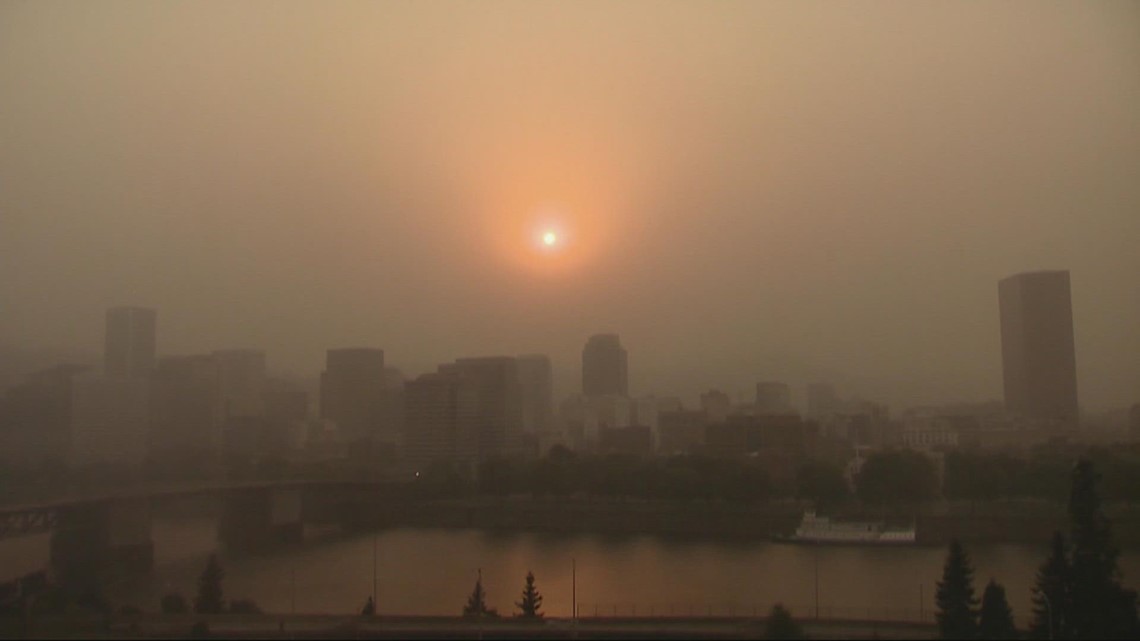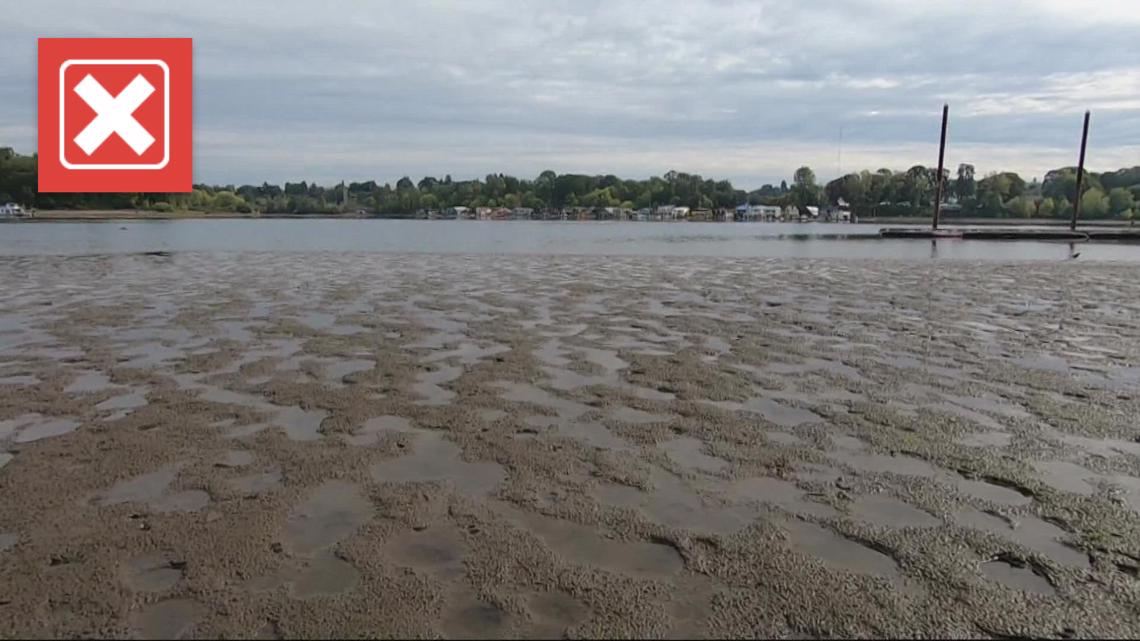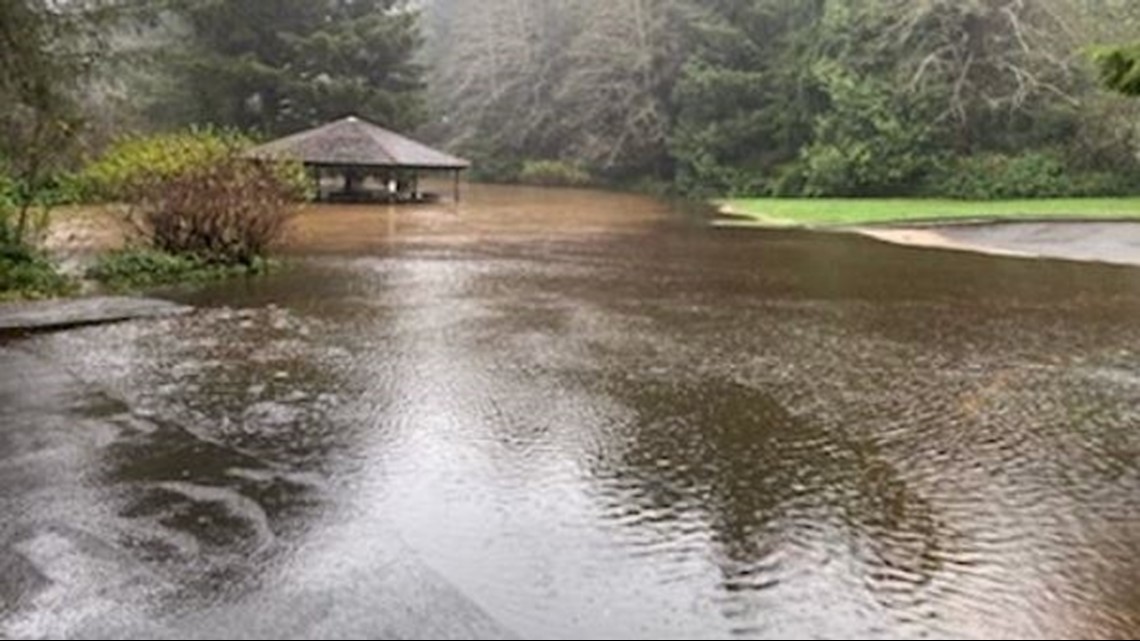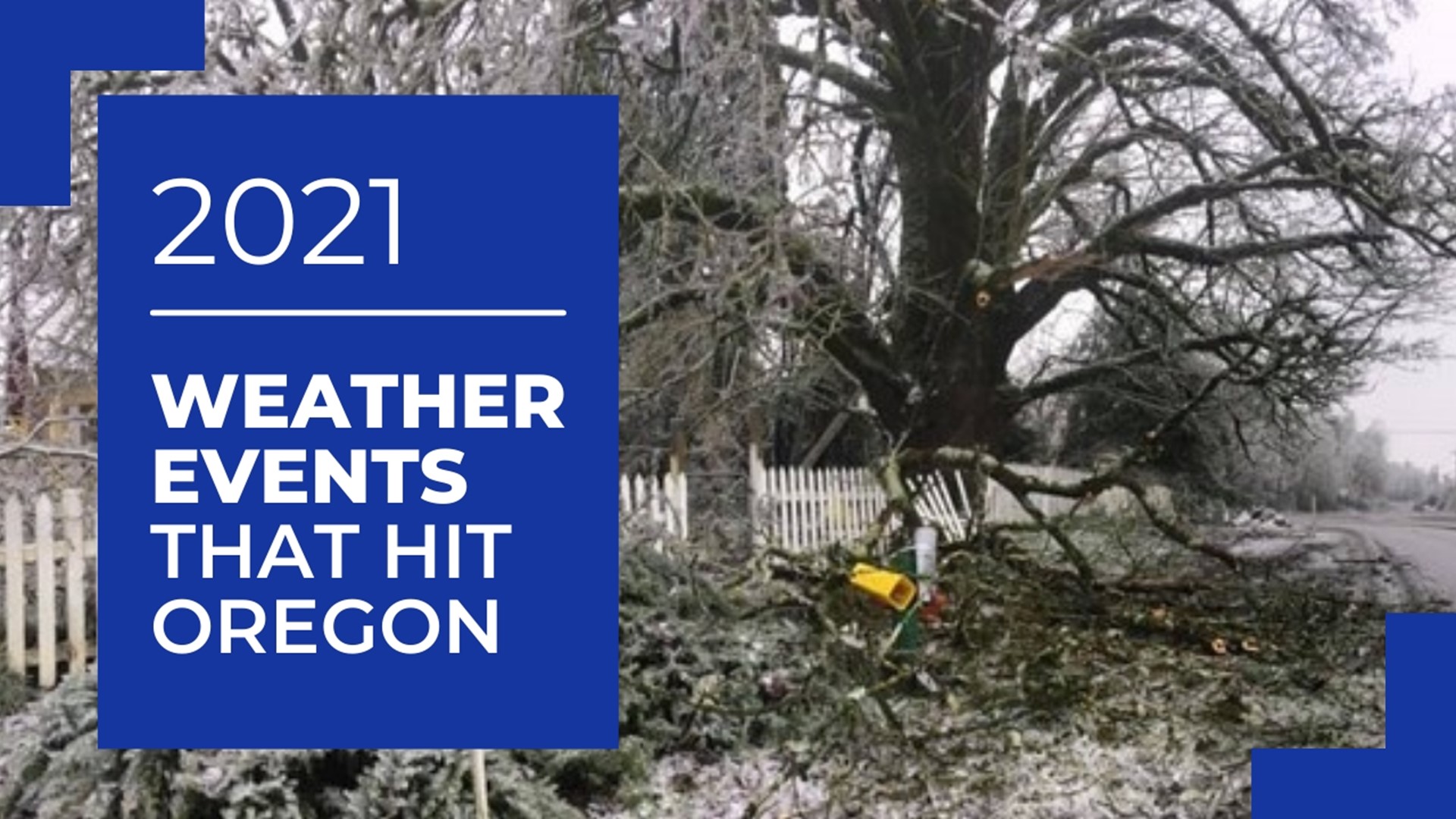PORTLAND, Ore. — The Portland region endured a marathon of extreme weather events this year, generating dozens of headlines that often topped the charts of KGW’s most-watched and most-read stories. Here are the five biggest meteorological curveballs that turned Portland upside down in 2021:
Winter storms
The first round of extreme weather arrived on Feb. 11 when a winter storm dumped freezing rain and snow on Portland overnight, causing traffic backups and canceled classes the next morning. The storm hit harder in the western Columbia River Gorge, prompting a local blizzard warning.
A second winter storm arrived overnight on Feb. 12, hitting the Portland area with several more inches of snow and bringing freezing rain to Marion County, leaving much of the region paralyzed on Feb. 13. Gov. Kate Brown declared a state of emergency in nine counties.
There were widespread reports of downed tree limbs, and Portland General Electric reported more than 270,000 customers without power. MAX and bus service in Portland was suspended and Interstate 84 was closed from Troutdale to Hood River. The snow turned to freezing rain on Feb. 14, prompting an ice storm warning until temperatures began to warm up the next morning.
PGE reported on Feb. 15 that the number of customers without power had risen to 300,000 and more than 4,400 of its power lines had been brought down by ice and fallen tree limbs. There were still more than 100,000 customers without power on Feb. 18.
Fast forward to December and the Portland region appeared set to bookend the year with another winter blast, although the city ultimately ended up less buried than most of the surrounding areas. Still, the snow and ice was enough to bring another round of crashes and closures to western Oregon.
Record-breaking heat wave
Heading into the final week of June, meteorologists began warning Pacific Northwest residents to brace for unprecedented temperatures caused by a rare “heat dome”– a weather phenomenon where high pressure in the atmosphere traps hot air near the ground.
Public and private agencies began making preparations. Vaccination sites switched to morning hours, sports teams moved game times and public works officials delayed maintenance projects. Multnomah County published a list of cooling centers that would open for the weekend.
The heat dome sent Portland temperatures soaring to 108 degrees on June 26, breaking the all-time record of 107 degrees. The new record stood for less than 24 hours before June 27 toppled it at 112 degrees. June 28 broke it yet again, setting a new record of 116 degrees.
The heat wave was responsible for 107 deaths in Oregon, including at least 54 in Multnomah County, and sparked a debate about the fairness of banning window AC units. Trees throughout the state were visibly scorched by the heat, and Oregon forestry experts met in November to discuss the damage.
A second heat wave hit Portland in August, but it didn’t reach the same record highs and caused no deaths. Public agencies said they were better prepared, and Brown declared a state of emergency ahead of the wave to free up additional resources.
Wildfire smoke
The second heat wave’s triple-digit temperatures came to a sooner-than-predicted end because, in an act of casual apocalyptic serendipity, a blanket of wildfire smoke settled over the Portland region and helped cool things down.


Oregon saw several days of hazy, smoke-filled air during the remaining summer weeks. The air quality didn’t reach the hazardous levels that Oregonians endured in September 2020, but the impact was noticeable. Many Portlanders discovered a thin layer of ash on their cars on the morning of Sept. 8 after a round of overnight rain.
Both rounds of haze were primarily caused by smoke from the Bull Complex wildfire in Mt. Hood National Forest and the Middle Fork Complex wildfire in Lane County.
Historic drought
The summer’s heat waves took place against a backdrop of severe drought not only in Oregon, but the entire western United States.
Klamath basin residents struggled to access water this summer when the Klamath Project – a canal system that supplies irrigation water throughout the basin – did not receive any water from the Upper Klamath Lake and overtaxed wells in the region began to run dry.


Farmers in central Oregon struggled with inequitable water distribution systems amid diminishing availability, leading to calls for the creation of “water markets” to share resources. Counties and cities across the Portland metro area banned firework sales leading up to July 4, citing the usually hot and dry weather and elevated risk of wildfires.
The Columbia and Willamette Rivers fell to their lowest levels in five years last month. Drought conditions in the summer dried out the surrounding soils, according to National Weather Service Hydrologist Andy Bryant, so the fall rain got soaked up instead of flowing to the rivers.
Signs of drought could also be seen in the record-breaking fire season in Southern Oregon and the early arrival of fall colors on Portland’s trees. And despite significant rainfall in November, most of Oregon is still experiencing drought conditions.
Heavy rain and flooding
Three days of frequent heavy rain starting Nov. 11 led to significant flooding in Portland and beyond. Jefferson Fire District first responders rescued a woman who had been swept up in the Santiam River on Nov. 11, and Multnomah Falls had to be closed due to high water on the access path.
There were widespread reports of standing water on roadways in Portland on Nov. 12, and homeowners near Fairview Lake reported residential flooding, which they blamed on officials being unable to access a pump station.
RELATED: Flood Warnings persist as western Washington braces for yet another atmospheric river Monday
The U.S. Coast Guard and Tillamook County first responders evacuated 20 people from the Neskowin Creek RV Resort after a creek began to flood the park and blocked the sole access road. Multiple coastal campgrounds were temporarily closed due to flooding, landslides and sinkholes.


The November downpour wasn’t the first instance of flooding this year; a powerful storm in mid-January caused road closures, power outages and landslides, and sparked a search for a woman whose car was carried away by a debris flow. Her body was found 10 days later.
The long-term forecast for the rest of the winter of 2021-2022 calls for relatively dry conditions, but with cold and a possibility of snow in the Willamette Valley.

